Introduction
When developing modern applications, designing efficient Application Programming Interfaces (APIs) is critical. Two major paradigms for structuring APIs are REST and gRPC. Understanding their differences can help developers choose the most suitable approach for various situations. In this article, we'll unpack the core concepts behind REST and gRPC, explore their operational models, and examine scenarios where each excels.
Understanding REST APIs
REST, short for Representational State Transfer, is an architectural style for building networked applications. Introduced in the early 2000s, REST structures client-server interactions as operations on resources, making use of HTTP protocols. The core design encourages stateless communication, meaning each request from a client contains all the information the server needs to fulfill it.
- Resource-Oriented: Everything is considered a resource and is accessible via unique URLs (Uniform Resource Locators).
- Standardized Operations: Most RESTful APIs use HTTP methods like GET, POST, PUT, PATCH, and DELETE to operate on resources.
- Flexible Data Formats: REST APIs typically use formats like JSON or XML, making integration with different clients straightforward.
- Statelessness: No session information is retained between requests; each call is independent.

RESTful Principles
REST is guided by several principles:
- Uniform Interface: Clients interact with resources in a consistent and predictable manner.
- Statelessness: Each request is standalone.
- Cacheable: Responses can be cached to improve performance and scalability.
- Layered System: Components may be managed and deployed independently.
One advanced concept in REST is HATEOAS (Hypermedia as the Engine of Application State), which means clients navigate the application via links provided dynamically by the server, rather than hard-coding endpoints.
Diving into gRPC
gRPC is a more recent framework designed for high-performance communication between distributed application components. It utilizes HTTP/2 as its transport layer and encodes messages in a compact binary format using Protocol Buffers (Protobuf). This approach unlocks several powerful features:
- Contract-First Development: APIs are defined in
.protofiles, and code for both client and server is generated based on these contracts. - Streaming: gRPC natively supports bidirectional streaming, which is ideal for scenarios requiring continuous data flow.
- Efficient Serialization: Protobuf decreases payload size and speeds up serialization, providing lower latency than most text-based formats.
- Strong Typing: Requests and responses follow strict schemas, reducing runtime errors.

gRPC in Action
To define a gRPC API, developers describe the service in a .proto file. This declaration is used to auto-generate boilerplate code in multiple programming languages, facilitating consistent API contracts across distributed systems. Because it favors HTTP/2, gRPC supports multiplexed connections, header compression, and built-in support for streaming large volumes of data.
Comparing REST and gRPC
| Feature | REST | gRPC |
|---|---|---|
| Transport Protocol | HTTP/1.1 (commonly), can use HTTP/2 | HTTP/2 only |
| Message Format | Text-based (JSON, XML, etc.) | Binary (Protocol Buffers) |
| Streaming Support | Possible, but less native | First-class client/server-side streaming |
| Discoverability | Human-readable, easily explored via browser/tools | Needs tooling, less human-friendly by default |
| Use Case Fit | Public APIs, broad compatibility, web applications | Internal microservices, high performance, low-latency scenarios |
| Versioning | Typically URI or headers | Versioned via .proto definitions |
Use Cases and When to Choose Each
- REST: Ideal for building APIs meant to be consumed by a wide range of external clients (such as browsers or mobile devices), or where api discoverability is essential.
- gRPC: Best suited for backend systems, microservices, or internal applications where speed, contract enforcement, and streaming are crucial.

Conclusion
Both REST and gRPC have strengths tailored to different needs. REST remains a solid choice for widely accessible APIs, ease of use, and browser integration. gRPC excels in scenarios requiring efficient, high-volume communication between trusted components. By understanding their unique properties, you can match the right architecture to your project's requirements.